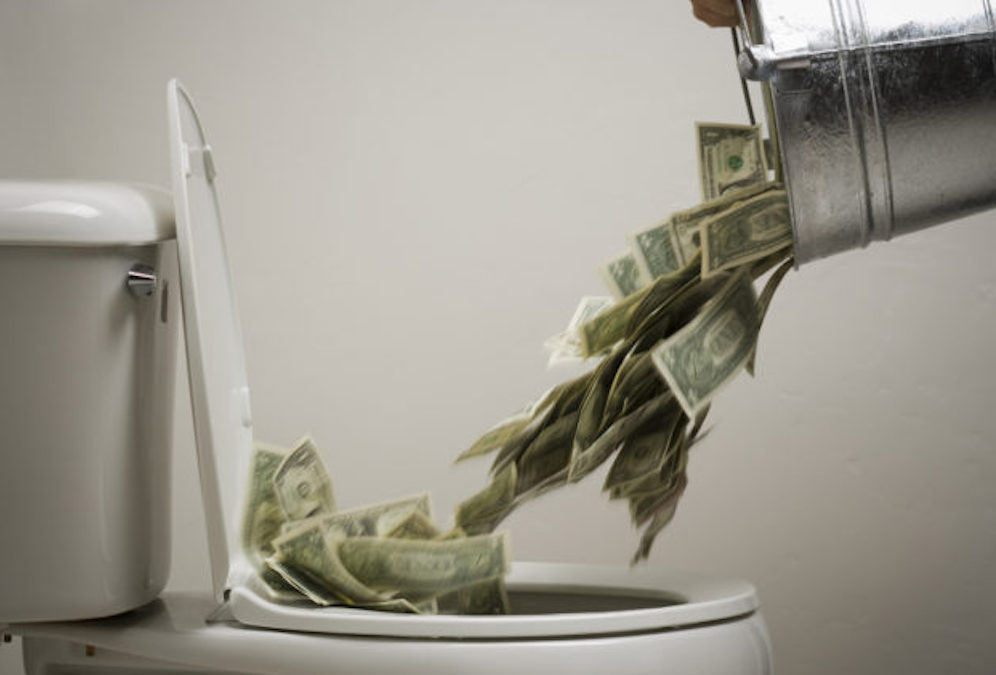The big news last week regarding the Clean Heat Standard potential study results was the reveal that the program is likely to add somewhere between $1.78 and $4.03 per gallon to the cost of heating oil and kerosene and as much as $2.12 to a gallon of propane. But also of note is the somewhat opaquely expressed expectation that it will cost Vermonters around $40 million a year just to administer this bureaucratic monstrosity.
Because it wasn’t obvious (to me anyway) if the NV5 research included administrative or costs, I reached out to the Department of Public Service for some clarity, and they responded that yes indeed it does, pointed to Table 17 on page 42 and the number $862M, and commented:
“It could reasonably be assumed the nearly $1B of non-incentive costs over 24 years will be adequate for all administrative costs including running a to-be-designed credit market and other incidentals.”
Well, let’s certainly hope so! $1 billion over twenty-four years breaks down roughly to around $40 million per year.
But still this number is just “assumed” — a guestimate that could actually be low because even as time ticks down toward the anticipated kick-off date for this program in 2026, nobody at this point has any real idea how that referenced “to-be-designed” credit market is going to work – or if it even can.
To refresh folks’ memories here, the Clean Heat Standard requires home heating fuel importers/dealers to acquire Carbon Credits for the products they sell that are generated based on specific actions taken to reduce greenhouse gas emissions. Obligated dealers can acquire Credits by performing these ghg reduction measures themselves (installing heat pumps, weatherizing homes, etc.), or buying them from others who perform these measures.
Those actions – and meeting the requirements of the law will necessitate hundreds of thousands of unique actions across the state performed by thousands of actors anytime, anywhere – all have to be substantially verified, accurately quantified, accurately monetized, and credit ownership legally established. This will be a hugely labor-intensive process. And it’s just step one!
According to the law (Act 18), a “’Clean heat credit’ means a tradeable, nontangible commodity that represents the amount of greenhouse gas reduction attributable to a clean heat measure.” In other words, it’s a financial instrument and like a stock or bond must be managed and regulated as such. That’s not a small thing!
The IT requirements alone to set up and operate a commodities financial exchange – essentially a bank — where hundreds of thousands of carbon credits can be securely bought, sold, tracked and retired is a gargantuan task. For reference (though I confess I’m not sure how good a reference this is but am considering the scale of processing drivers’ licenses and vehicle ownership/registration as somewhat similar) the revamp of the VTDMV’s IT system underway now is going to cost $50 million. Can Vermont more cheaply outsource this to another state or private entity? If so, such an option has not yet been identified, and if there were one, I think they would have found it by now.
And here’s another fun glitch in this convoluted moronathon (thank you internet for suggesting this fun and family friendly alternative to “cluster—-“), there is no funding source in place to actually set up the program. Yup. As the Director, Efficiency & Energy Resources confirmed, “The PUC has not identified yet a funding source, comments have been submitted by stakeholders.” I have a comment. This… is… hilarious!
Yes, the deceptive, sneaky, dishonest politicians who passed this law were so paranoid about being accused (correctly) of levying a massive carbon tax – or any tax – on Vermonters’ ability to survive winter, they dropped all the revenue responsibility onto the shoulders of the (so they hoped) poorly understood “carbon credit.” The trick was that they thought they could convince voters that the government forcing someone to buy a “carbon credit” wasn’t for all intents and purposes the same thing as forcing them to pay a carbon tax. So much for that! We are not fooled.
But selling carbon credits can’t start generating revenue to fund the program until a carbon marketplace exists for parties to register, buy and sell them. You can’t set up and staff a carbon credit marketplace without substantial upfront capital. And it ain’t there. Oops.
So, if the Clean Heat Standard is going to go into effect as anticipated in 2026, the next legislature (the one sworn in after the November election) is going to have to bite the political bullet and pass some new tax or increase an existing one to the tune of, “it can be reasonably assumed,” $40 million — possibly more — to be spent in 2025. Or the voters can replace the Keystone Climate Cops we have in office now in November 2024 with commonsense lawmakers who will vote to scrap this utterly pointless, ridiculously expensive, seriously damaging exercise in virtue signaling before it blows up on the launch pad with all of us inside.
